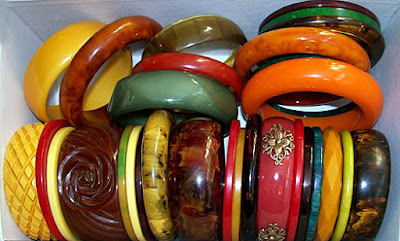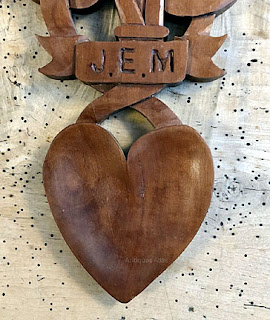 QUESTION: I recently inherited a number of pieces of antique furniture from my grandmother. They range from just under 100 years old to around 200. She loved nice things and was always on the lookout for interesting pieces. Unfortunately, as she got older, she was unable to care for them as well as she had in the past. I’m new to antiques and have no idea what to do to care for these pieces. Can you help me?
QUESTION: I recently inherited a number of pieces of antique furniture from my grandmother. They range from just under 100 years old to around 200. She loved nice things and was always on the lookout for interesting pieces. Unfortunately, as she got older, she was unable to care for them as well as she had in the past. I’m new to antiques and have no idea what to do to care for these pieces. Can you help me?
ANSWER: You’re very lucky that she thought that much of you to leave you her prized pieces. Over time, antique furniture accumulates dirt and grime. Even if she dusted it often, doing so grinds the dirt in, believe it or not. So the first thing you need to do is clean your pieces.
 Cleaning is a simple process but you must be careful not to hurt the finishes. One of the best products to use to clean antique furniture is Murphy’s Oil Soap which comes in a concentrated liquid and also in a spray bottle. The best material to use for cleaning is an old washcloth with a bit of nap left on it. If you’re using the concentrate, mix with water following the directions on the bottle. Dip the washcloth in the mixture and get it nice and soaked, then wring it out as much as you can. If you’re using the spray, apply some onto a wet, wrung out washcloth. Clean a small section of a piece at a time, drying immediately with an old towel. You’ll have to rinse the washcloth often as it will pick up a lot of dirt. When you’ve washed the entire piece, let it dry for at least 24 hours. You’ll notice that your pieces are beginning to look a lot better already.
Cleaning is a simple process but you must be careful not to hurt the finishes. One of the best products to use to clean antique furniture is Murphy’s Oil Soap which comes in a concentrated liquid and also in a spray bottle. The best material to use for cleaning is an old washcloth with a bit of nap left on it. If you’re using the concentrate, mix with water following the directions on the bottle. Dip the washcloth in the mixture and get it nice and soaked, then wring it out as much as you can. If you’re using the spray, apply some onto a wet, wrung out washcloth. Clean a small section of a piece at a time, drying immediately with an old towel. You’ll have to rinse the washcloth often as it will pick up a lot of dirt. When you’ve washed the entire piece, let it dry for at least 24 hours. You’ll notice that your pieces are beginning to look a lot better already.
But cleaning is only the beginning. After a piece is thoroughly dry, you’ll need to apply a protective coating.
 The most common finishes found on antique furniture are waxes, oils, shellacs, and varnishes. Not only do these finishes bring out the beauty of the wood's grain and color, but they also protect the wood from moisture and heat changes that can cause shrinking, swelling, crazing, and cracking. Finishes seal the wood pores against dirt and grime, too.
The most common finishes found on antique furniture are waxes, oils, shellacs, and varnishes. Not only do these finishes bring out the beauty of the wood's grain and color, but they also protect the wood from moisture and heat changes that can cause shrinking, swelling, crazing, and cracking. Finishes seal the wood pores against dirt and grime, too.
But in order for a finish to protect the wood, the finish itself must be protected. This can be done by polishing the finish with either a wax or an oil.
 You can find waxes in liquid, aerosol spray, and paste forms in hardware and home supply stores. Look for products that contain carnauba wax, a natural substance from a palm tree native to Brazil, that’s especially durable and produces a glossy shine when rubbed vigorously. Minwax is one of the best on the market.
You can find waxes in liquid, aerosol spray, and paste forms in hardware and home supply stores. Look for products that contain carnauba wax, a natural substance from a palm tree native to Brazil, that’s especially durable and produces a glossy shine when rubbed vigorously. Minwax is one of the best on the market.
Another reliable and popular polish is beeswax, which has been available for many years. You’ll find a variety of paste and liquid polishes containing beeswax in hardware and home supply stores.
 Apply either type of wax with an old athletic sock. Rub it in thoroughly and wait at least 30 minutes before buffing it with #0000 steel wool. Don’t worry, this grade is as soft as fabric. Wait 24 hours and apply a second coat. But this time, buff it with an old towel.
Apply either type of wax with an old athletic sock. Rub it in thoroughly and wait at least 30 minutes before buffing it with #0000 steel wool. Don’t worry, this grade is as soft as fabric. Wait 24 hours and apply a second coat. But this time, buff it with an old towel.
Oils such as tung, linseed, and lemon oil have been used for centuries to preserve and polish furniture finishes. They're often mixed with absorption promoters, so they actually sink into the wood pores rather than remaining on top as waxes do. Oils leave a lustrous shine that’s softer than a glossy wax shine, and they provide good protection against moisture. However, they tend to darken the wood slightly over time. And as with applying wax, use a piece of old athletic sock to apply the oil. Since you'll need to give your furniture a second coat of oil in most cases, place the cloth you used in a plastic bag and then in the freezer. When you're ready to apply an additional coat, take it out 30 minutes before you plan to begin so that it can thaw.
 Regardless of whether you choose to use a wax or oil, always use the same type that has been used previously on a piece of furniture. Finish surfaces that are accustomed to one type of polish won't accept another type. For example, an oil applied to a finish that had been previously waxed will remain on the wood surface and won't soak in.
Regardless of whether you choose to use a wax or oil, always use the same type that has been used previously on a piece of furniture. Finish surfaces that are accustomed to one type of polish won't accept another type. For example, an oil applied to a finish that had been previously waxed will remain on the wood surface and won't soak in.
If you don't know what type of polisher has been used on a piece—apply a small amount of an wax or oil to an inconspicuous spot on the piece. The wood should accept one of them and that is the one you should use.
How often you need to clean and polish your antique furniture will depend on the kind of heating and cooling system in your home, its geographical location, how you use your antique pieces, and the type of cleaner/polisher you're using.
 Avoid using spray oils or dusting helpers like Pledge on your antique furniture. The oil in them will only build up on the piece, attracting more dust and grime. Generally, you’ll need to reapply a wax or oil every six months or at least once a year. A light dusting in between applications will keep your pieces looking good.
Avoid using spray oils or dusting helpers like Pledge on your antique furniture. The oil in them will only build up on the piece, attracting more dust and grime. Generally, you’ll need to reapply a wax or oil every six months or at least once a year. A light dusting in between applications will keep your pieces looking good.
Besides regular dusting and waxing or oiling, you also need to provide the proper environment, paying close attention to heat, humidity, and light.
 It’s important not to keep your rooms too warm. Extreme fluctuations can harm antique furniture, loosening joints and veneers. During the colder months, depending on your geographical location, keep pieces away from radiators, warm air vents, and fireplaces. Too much heat can rob the wood of vital moisture.
It’s important not to keep your rooms too warm. Extreme fluctuations can harm antique furniture, loosening joints and veneers. During the colder months, depending on your geographical location, keep pieces away from radiators, warm air vents, and fireplaces. Too much heat can rob the wood of vital moisture.
Keeping a relative humidity level at around 55 percent at 65 degrees F. is also important. Purchase one or more inexpensive digital barometers and place them in rooms with your antique furniture.
 Lastly, avoid placing antique furniture, especially older more valuable pieces in direct sunlight or artificial light, especially with today’s LED lightbulbs. Over-exposure to either is harmful.
Lastly, avoid placing antique furniture, especially older more valuable pieces in direct sunlight or artificial light, especially with today’s LED lightbulbs. Over-exposure to either is harmful.
To read more articles on antiques, please visit the Antiques Articles section of my Web site. And to stay up to the minute on antiques and collectibles, please join the over 30,000 readers by following my free online magazine, #TheAntiquesAlmanac. Learn more about "folk art" in the 2023 Winter Edition, online now. And to read daily posts about unique objects from the past and their histories, like the #Antiques and More Collection on Facebook.









































